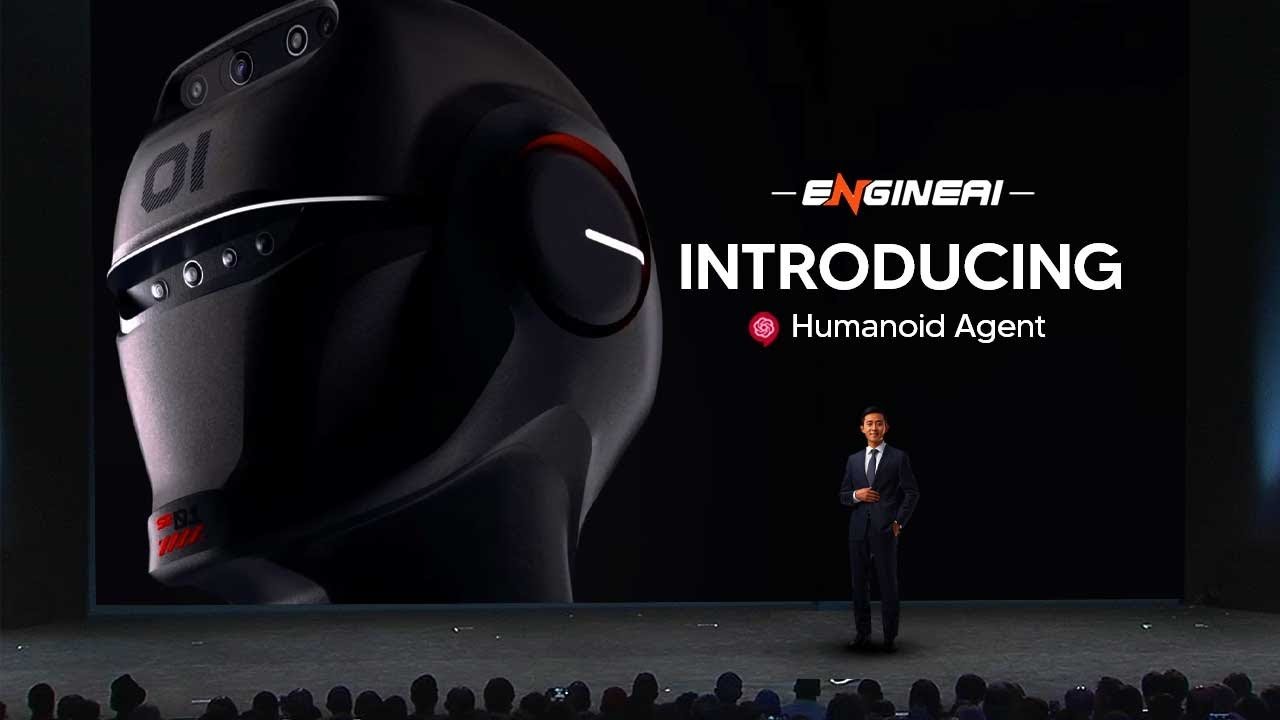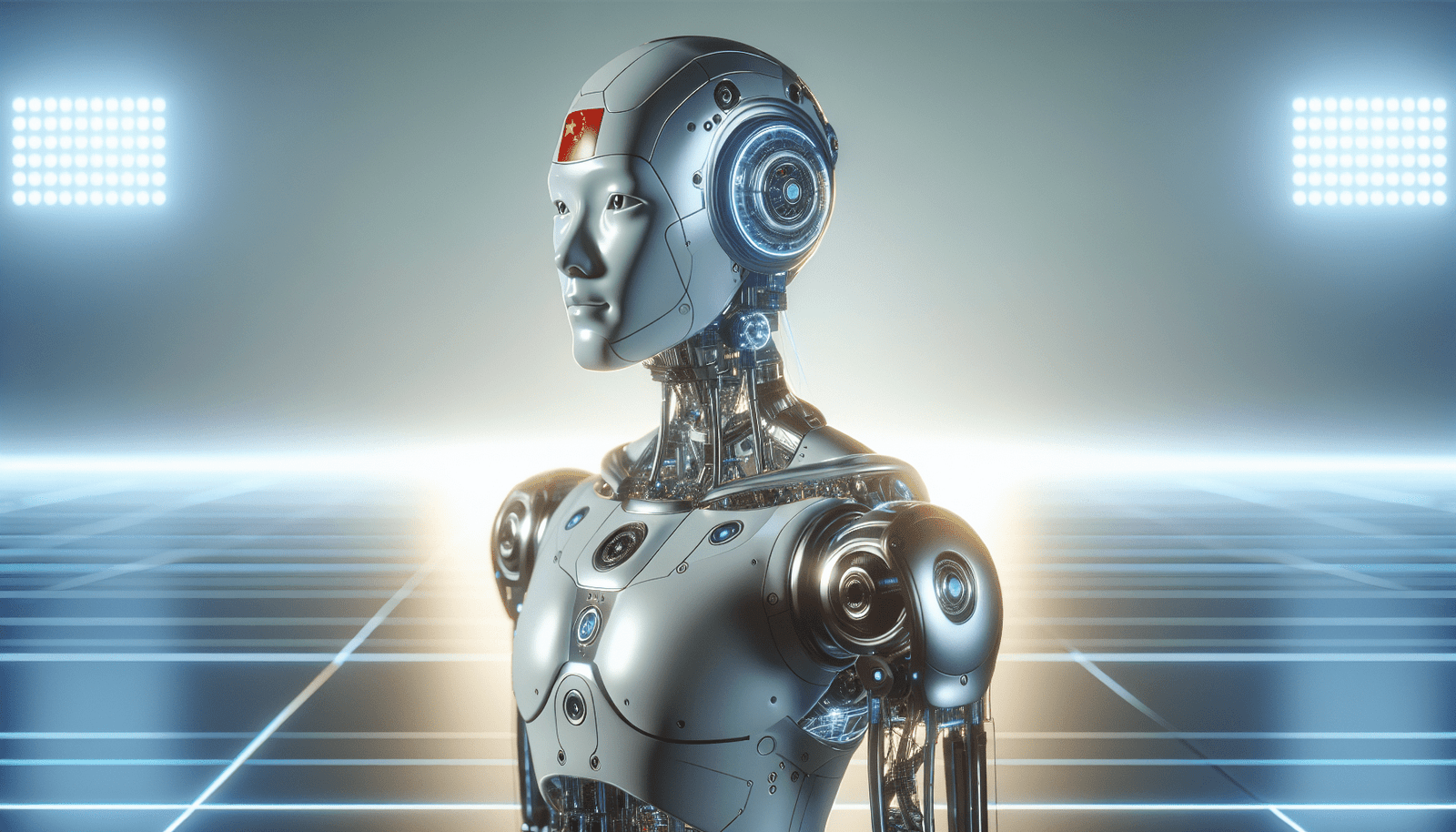In a remarkable stride from Shenzhen, China, Engine AI has unveiled a humanoid robot that demonstrates exceptionally human-like walking patterns. This groundbreaking development stems from the collective expertise of a dedicated team of 36 researchers, comprising alumni from institutions like UC Berkeley. Employing sophisticated AI and leveraging Nvidia’s Isaac Gym for simulated training, Engine AI’s robot offers promising applications across scientific research, industrial manufacturing, and commercial services. The robot’s capabilities, such as a walking speed of 2 m/s, extended battery life, and an advanced aluminum exoskeleton, underscore China’s burgeoning position in the global AI and robotics arena.
Founded in October 2023, Engine AI is swiftly positioning itself as a key innovator, providing advanced robotics platforms equipped to handle diverse tasks. Among these, the SA1 Pro emerges as the most humanlike, marking a significant leap in humanoid technology. This advancement signifies not just innovation in robotics engineering, but also China’s competitive edge in the quest for AI leadership globally. Engine AI’s achievements promise to be a transformative force in the robotics industry, showcasing the potential to reshape the landscape of humanoid robotics with their swift developmental progress.
Background of Engine AI
Origin and foundation of the company
Engine AI was founded in October 2023 in Shenzhen, China, a rapidly growing hub for technology and innovation. The company was established with the core mission of producing general-purpose, intelligent robots that could seamlessly integrate into varied industries. Despite being a new entrant in the field, Engine AI swiftly positioned itself as a formidable force in robotics and artificial intelligence, leveraging the technological infrastructure of Shenzhen and the expert knowledge of its founders.
Focus on intelligent robots
Since its inception, Engine AI has concentrated its efforts on developing intelligent robots capable of performing complex tasks autonomously. The strategic focus is not merely on producing humanoid robots but on creating machines that exhibit a high degree of practical intelligence, adaptability, and operational efficiency. By embracing the latest advancements in AI research and robotics, the company aims to revolutionize industries through automation and improve the functionality of service-oriented robots.
Key members and expertise
At the heart of Engine AI’s success is its team of 36 researchers, each bringing valuable expertise to the table. This team is composed of top-tier professionals with rich backgrounds in AI, robotics, and engineering. Notably, the team includes experts who have honed their skills at leading institutions around the world, such as UC Berkeley. This diverse and highly skilled group of professionals drives the company’s innovative projects, ensuring that Engine AI continuously advances in the field of intelligent robotics.
Introduction to Engine AI’s Humanoid Robot
Overview of the humanoid robot design
The humanoid robot developed by Engine AI is designed to closely mimic human locomotion, setting a new benchmark for realism and dexterity in robotics. The design integrates sophisticated algorithms with advanced mechanical engineering, resulting in a robot that moves with an uncanny resemblance to human beings. The ergonomic structure and fluid motion of the robot highlight the company’s dedication to simulating human-like functionality and appearance.
Comparison with Teslabot
Engine AI’s humanoid robot is often compared to Tesla’s ambitious Teslabot project. While both aim to achieve human-like functionality in robots, Engine AI’s model stands out for its exceptional walking motion, perceived as more refined and realistic than existing models. Whereas Teslabot is still in development stages, Engine AI has already made significant progress by delivering a product that closely fulfills the anthropomorphic expectations of a humanoid machine.
Key differentiators and advancements
The distinction in Engine AI’s humanoid robot lies in its advanced motion control systems and the realistic execution of its movements. The robot’s capability to maintain balance while responding to environmental stimuli, such as being nudged, showcases a level of operational sophistication. Moreover, its training via Nvidia’s Isaac Gym offers a unique advantage, as the simulation environment provides extensive learning capabilities, refining the robot’s response accuracy and overall performance.

This image is property of i.ytimg.com.
Technological Innovations in Engine AI’s Robot
Realistic walking motion technology
One of the most groundbreaking innovations of Engine AI’s humanoid robot is its remarkably human-like walking motion. This achievement is due to cutting-edge algorithms that meticulously control the gait cycle, promoting natural movement patterns. By tackling the longstanding challenge of robot mobility, Engine AI has set new standards in the robotics industry, demonstrating its capability to harmonize fluidity and functionality.
Advanced AI and robotics research methods
Engine AI employs advanced AI and robotics research methodologies, including reinforcement learning and deep learning, to constantly enhance the robot’s capabilities. The integration of AI-driven decision-making processes ensures that the robot adapts efficiently to diverse scenarios, learning from each interaction to refine its actions and improve performance over time.
Use of Nvidia’s Isaac Gym for development
Engine AI utilizes Nvidia’s Isaac Gym, a state-of-the-art simulation environment, to develop and perfect its humanoid robot. This tool allows for the rapid iteration and testing of motion control algorithms by simulating countless scenarios. The rigorous virtual training regime mirrors real-world applications, enabling the robot to perform tasks with high precision and efficiency in physical environments.
Team Behind Engine AI
Profile of the 36 researchers
Engine AI’s innovative edge is largely driven by its team of 36 researchers, each of whom contributes unique insights and skills to the company’s projects. The team comprises individuals with exceptional expertise in robotics, machine learning, and data analysis, all working collaboratively to drive the company’s vision of intelligent robotics forward.
Representation from top universities
The company is proud to have team members who hail from some of the world’s leading educational institutions. Notably, researchers from UC Berkeley and other top-tier universities contribute to the technological advancements of Engine AI, bringing cutting-edge knowledge and research methodologies to the company’s projects.
Roles and contributions in the project
Each member of the Engine AI team plays a pivotal role in the company’s success. From developing core robotic components to refining AI algorithms and designing human-like movements, the collective efforts of these researchers ensure the continual innovation and improvement of Engine AI’s robotic solutions. Their contributions are integral to navigating the challenges of creating sophisticated humanoid robots.

Practical Applications of the Robot
In scientific research
Engine AI’s humanoid robot has significant potential for aiding scientific research. Its precise movement and adaptability make it an ideal tool for conducting experiments in controlled environments, assisting researchers by performing repetitive or hazardous tasks with reliability and accuracy.
In industrial manufacturing
In the realm of industrial manufacturing, the robot can optimize production processes by assuming roles traditionally filled by human workers. Its ability to work tirelessly and handle various manufacturing tasks can increase efficiency, reduce costs, and mitigate the risks associated with manual labor.
In commercial services
Commercial services are another area where Engine AI’s humanoid robots can be transformative. From customer service to maintenance roles, these robots can enhance service delivery by offering consistent, efficient, and flexible solutions in environments such as retail stores, airports, and hotels.
Features of the Humanoid Robot
Walking speed and mobility
The humanoid robot developed by Engine AI boasts a walking speed of 2 meters per second, reflecting its efficiency and capability to navigate complex environments. Its mobility is characterized by smooth movement, quick adaptability to obstacles, and an impressive degree of freedom in its motions, closely mirroring human locomotion.
Battery life and sustainability
The robot features a long-lasting battery, designed for sustainability and prolonged operational periods without compromising performance. With its quick-release mechanism, the battery is easily replaceable, facilitating uninterrupted functionality in various applications.
Material and exoskeleton design
The robot features an all-aluminum exoskeleton, which provides a robust yet lightweight structure. This design delivers durability and resilience, ensuring the robot can withstand demanding operational conditions while remaining efficient and safe for everyday interactions.

Product Range of Engine AI
Various robotics platforms
Engine AI offers a diverse range of robotic platforms tailored to different applications and industry requirements. These platforms showcase Engine AI’s commitment to versatility and innovation in the field of robotics.
SA1 Pro as the flagship model
The SA1 Pro is Engine AI’s flagship model, epitomizing the company’s achievement in creating the most humanlike robot in their product line. This advanced model is equipped with superior motion control and sensory systems, positioning it at the forefront of humanoid robotics.
Comparison with other products
Compared to other products in Engine AI’s lineup, the SA1 Pro stands out for its enhanced human resemblance and sophisticated design. Additional platforms, such as the SA1 and S2 robotics systems, offer alternative functionalities and appearances, catering to specific industry demands while maintaining the high standards set by Engine AI.
China’s Position in AI and Robotics
Impact of Engine AI’s development
Engine AI’s breakthrough in humanoid robotics underscores China’s growing influence in AI and robotics. The development of such advanced technology indicates the country’s capacity to produce high-caliber, innovative solutions that are pivotal in the global tech landscape.
China’s advancements in technology
China’s continuous investment in AI research and technology development has led to significant advancements, with Engine AI exemplifying successful outcomes of such efforts. China’s strategic emphasis on technology strengthens its position as a global leader in the race for AI and robotics supremacy.
Implications for global innovation race
The progress made by Engine AI amplifies the competitive dynamics of the global innovation race. As China’s role in robotics continues to expand, it challenges other tech conglomerates worldwide to accelerate their own developments, thereby fueling worldwide advancement and collaboration in AI technology.
Future Prospects of Humanoid Robots
Potential for industry integration
The potential integration of humanoid robots into various industries promises transformational change. From automating routine processes to enhancing customer experiences, these robots can significantly improve operational efficiency and productivity.
Innovative opportunities in various sectors
Humanoid robots open new avenues for innovation across sectors, including healthcare, entertainment, and space exploration, where their adaptability and precision can be unmatched by existing technologies. These opportunities encourage further exploration and experimentation in robotic applications.
Predictions for continued advancements
Continued advancements in humanoid robotics predict a future where these robots become commonplace in both private and public spheres. As technology progresses, more sophisticated functionalities will emerge, enhancing the role of humanoid robots in everyday life and professional environments.
Conclusion
Summary of Engine AI’s contributions
Engine AI has made notable contributions to AI and robotics through the development of its humanoid robot. By achieving realistic walking motion and advanced integration of AI, the company has set new standards for the industry, showcasing a remarkable blend of technology and innovation.
Long-term implications for AI and robotics
The long-term implications of Engine AI’s work extend beyond immediate technological achievements, suggesting a future where AI-driven robots play pivotal roles in diverse fields. These implications point to increased efficiency, safety, and adaptability in operations across many industries.
Future outlook for Engine AI and its humanoid robots
Looking ahead, Engine AI is well-positioned to continue advancing the frontiers of robotics technology. With its talented team and commitment to innovation, the company is expected to drive significant progress, not only enhancing the capabilities of humanoid robots but also shaping the future of AI integration in everyday life.